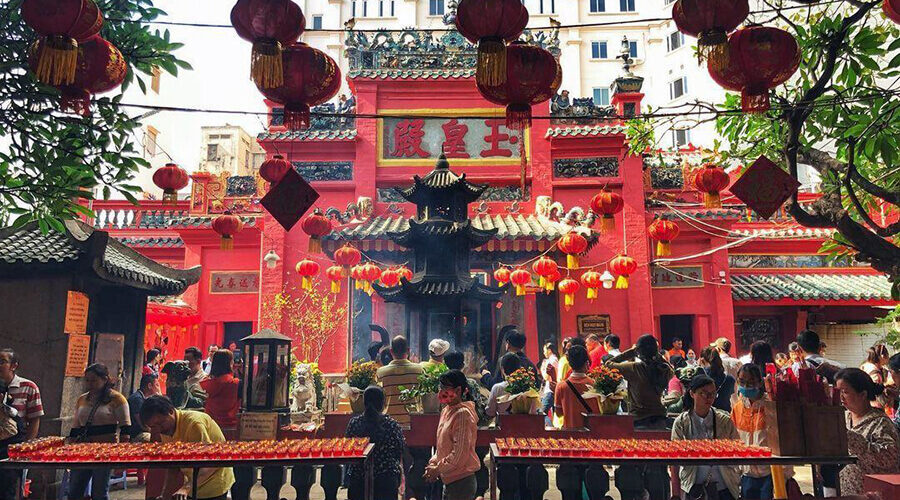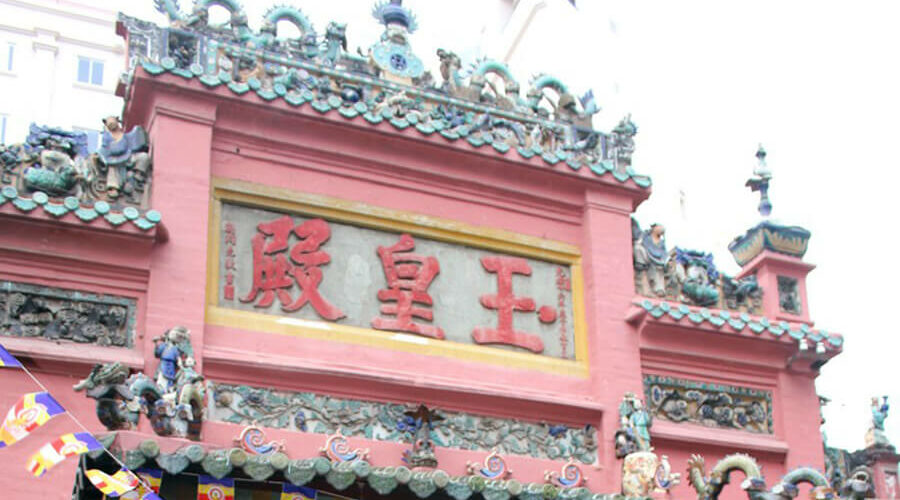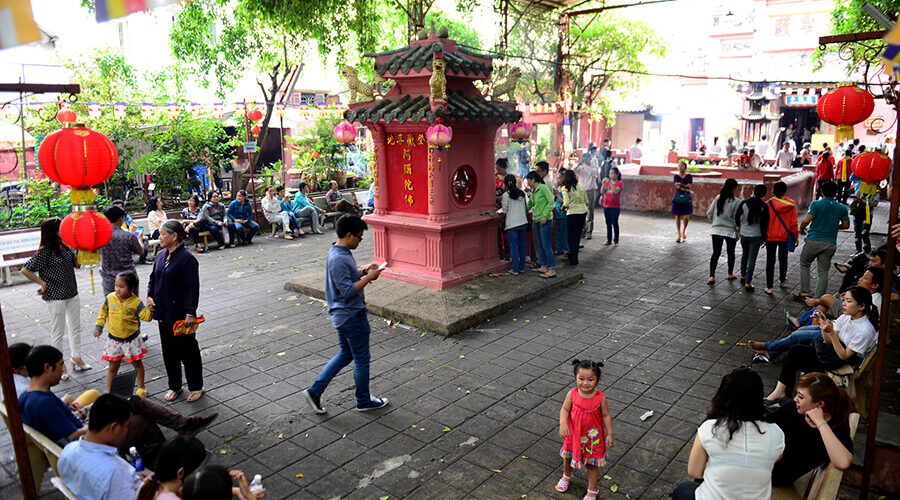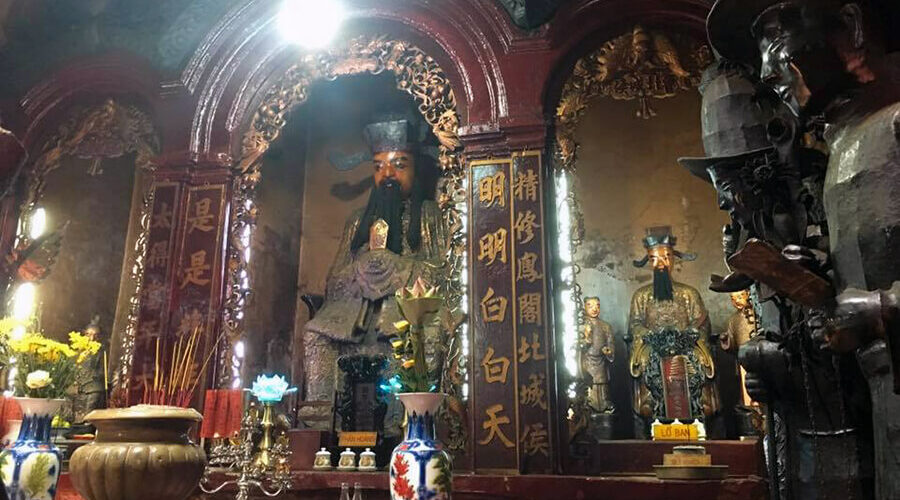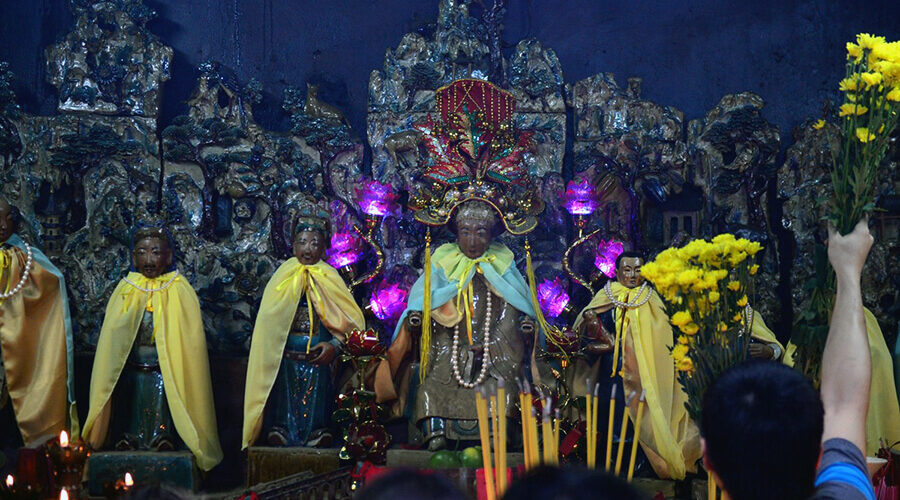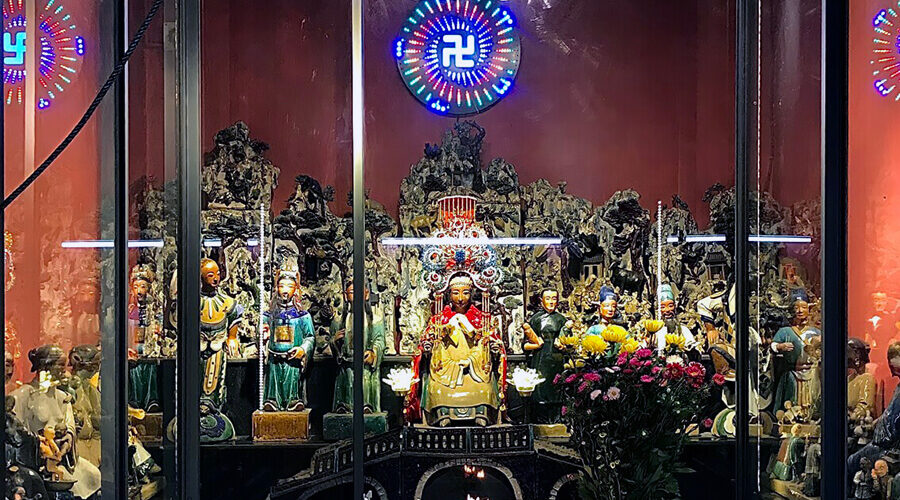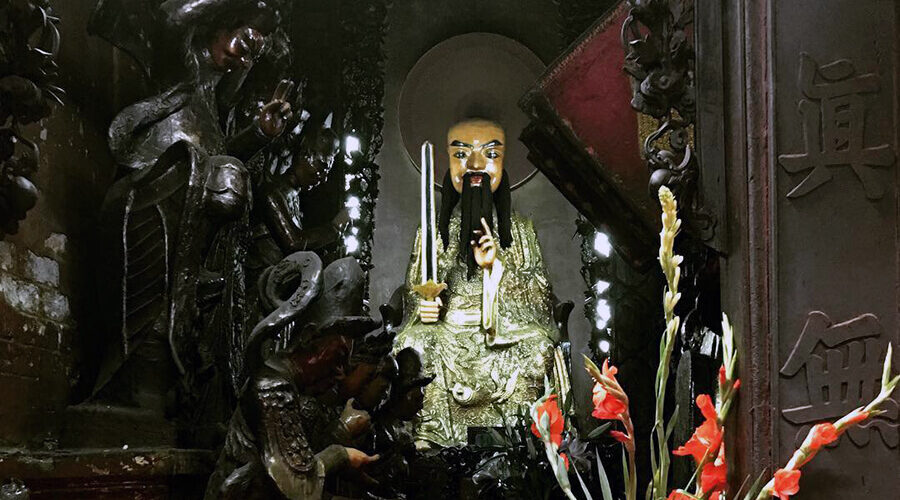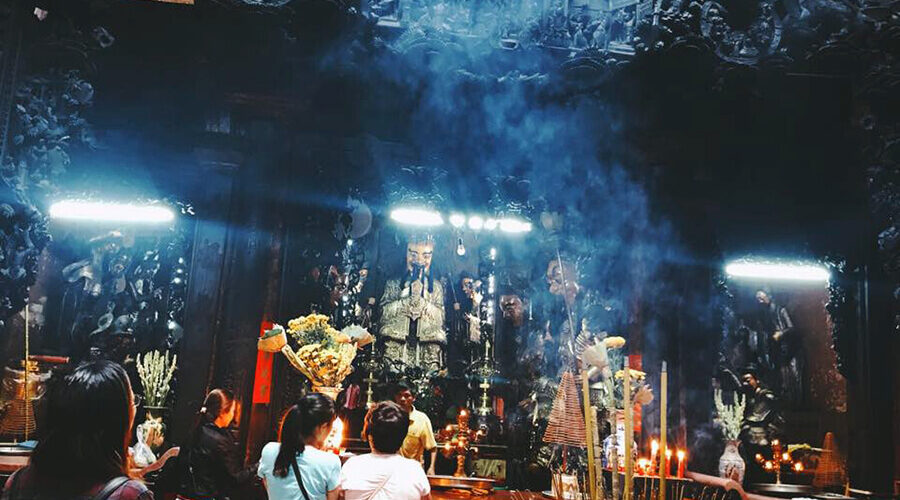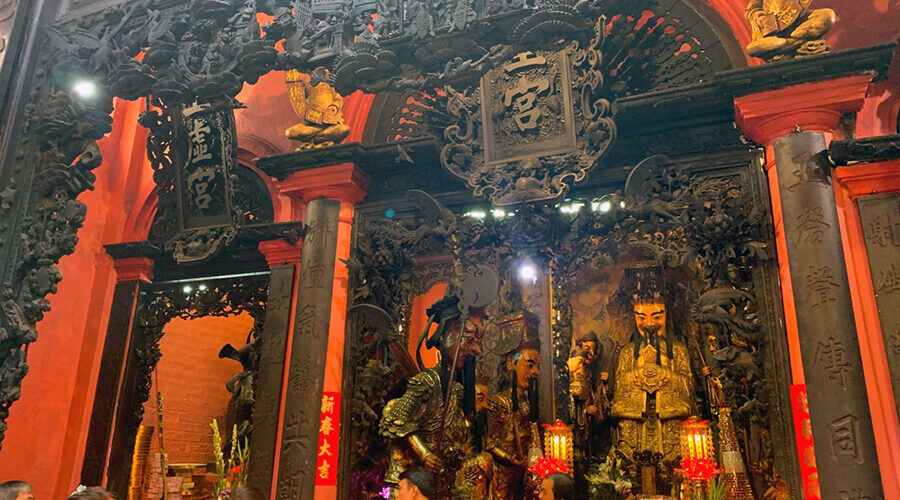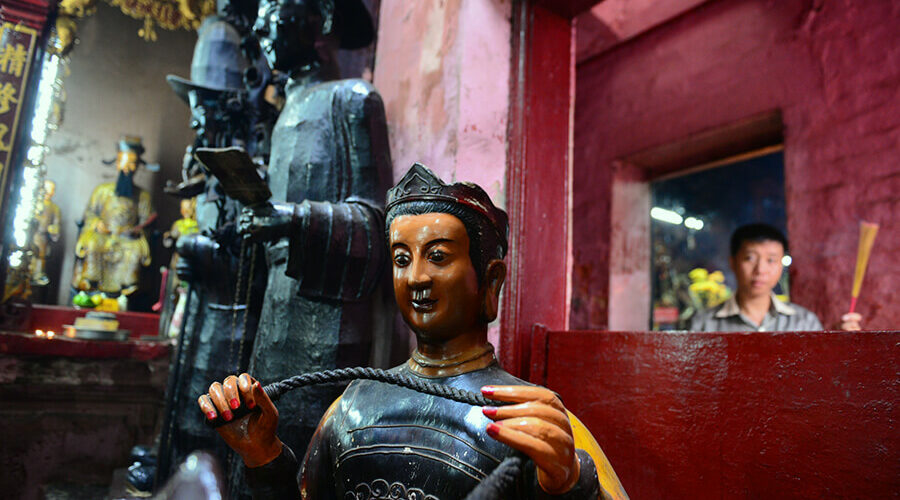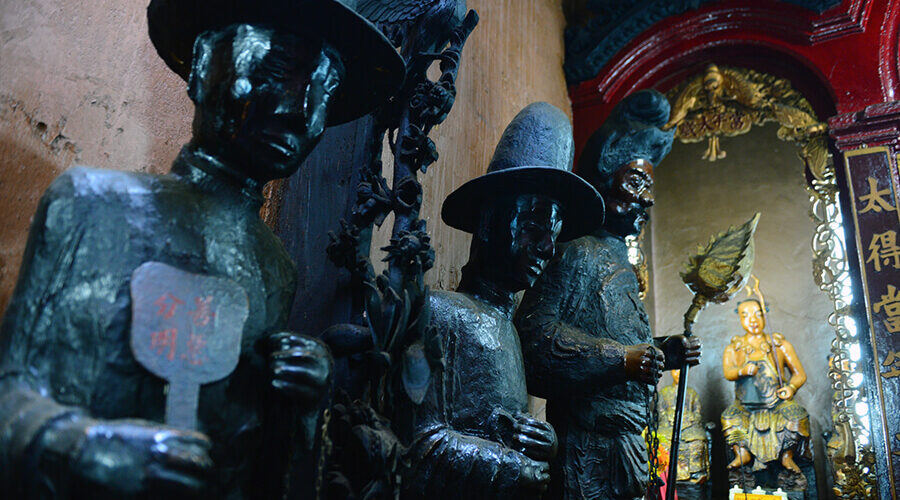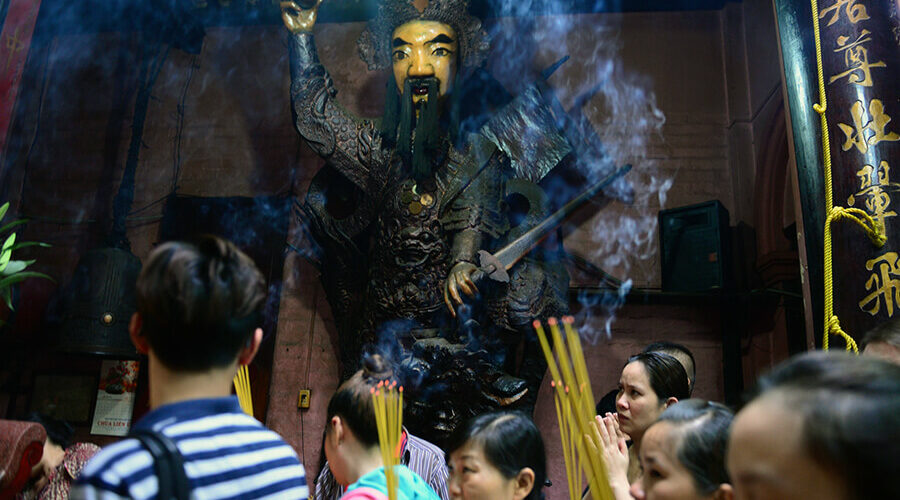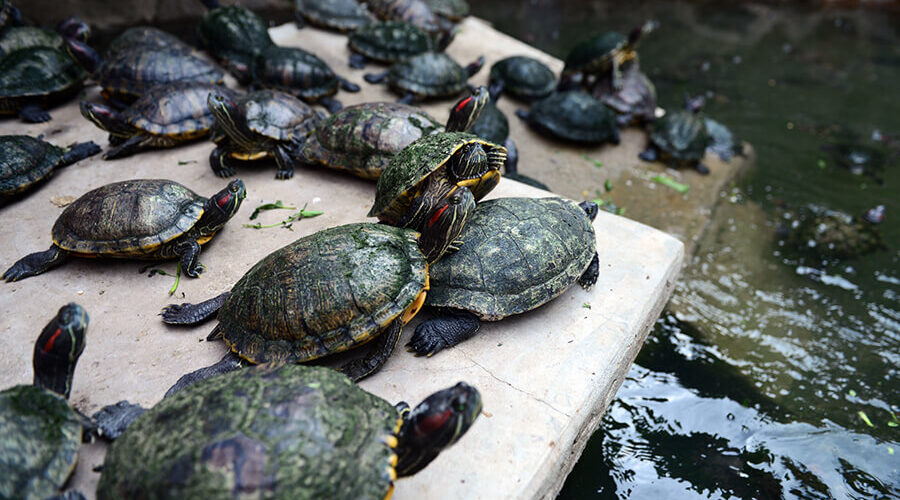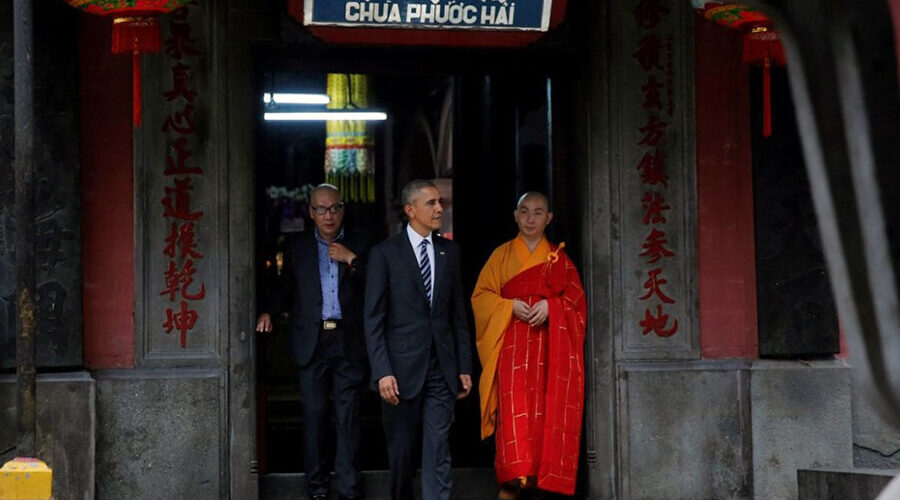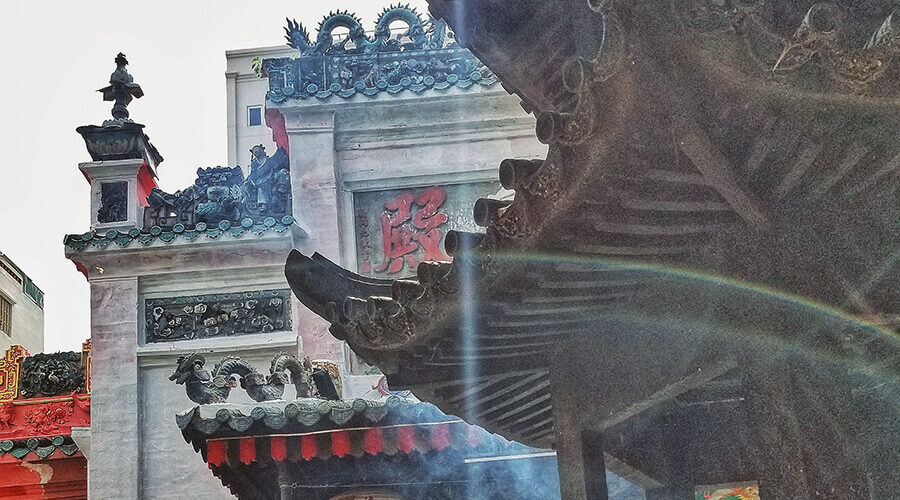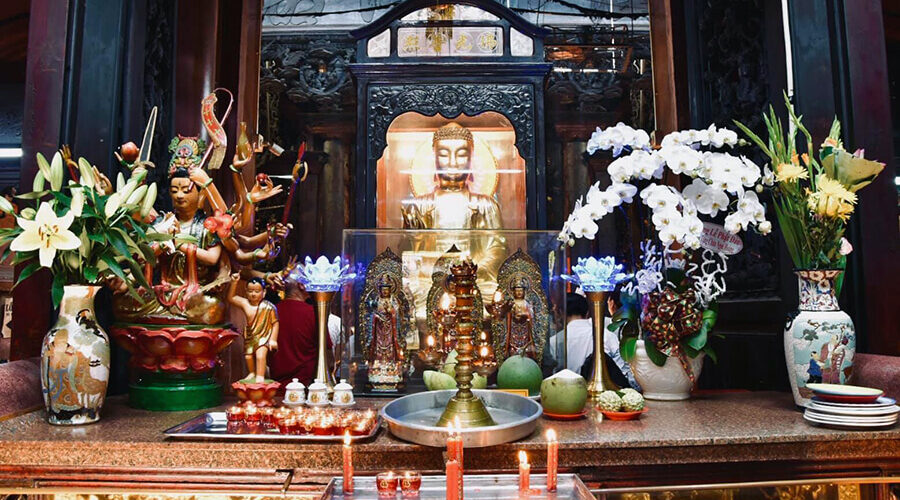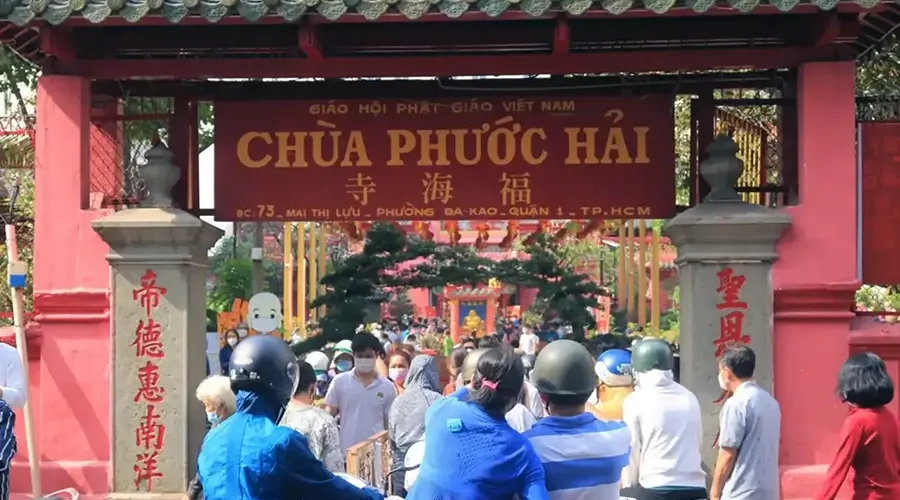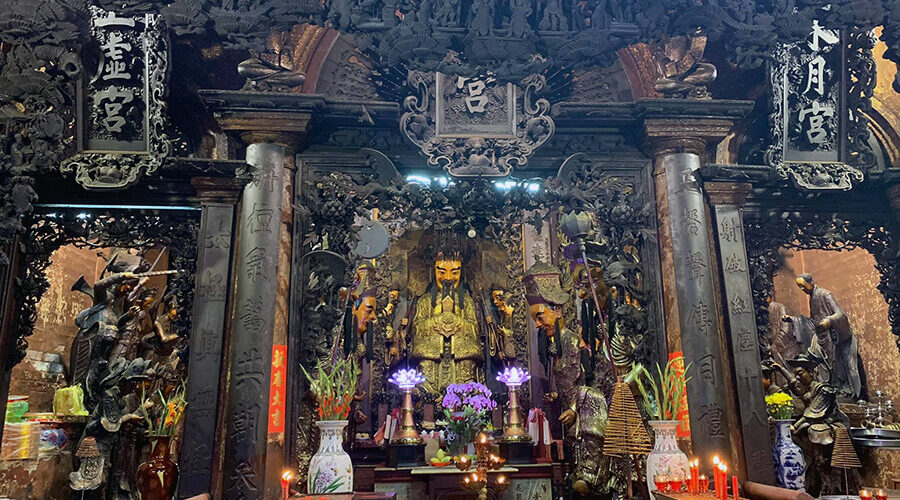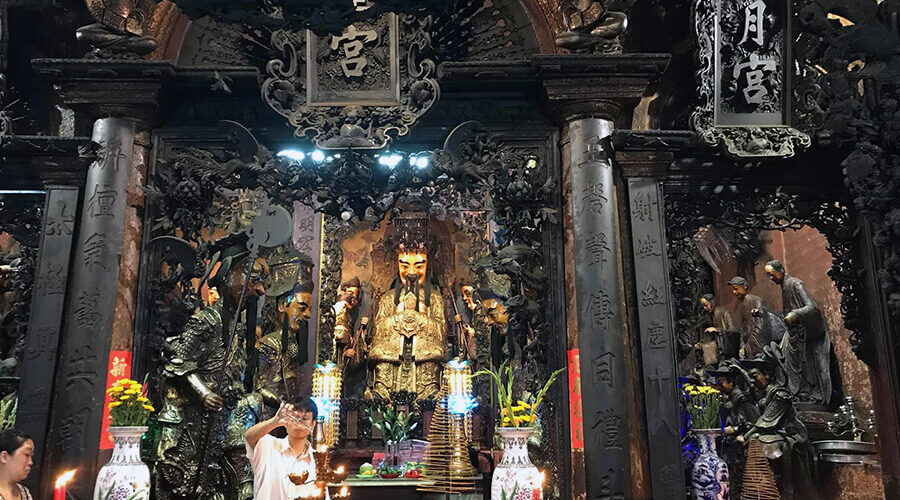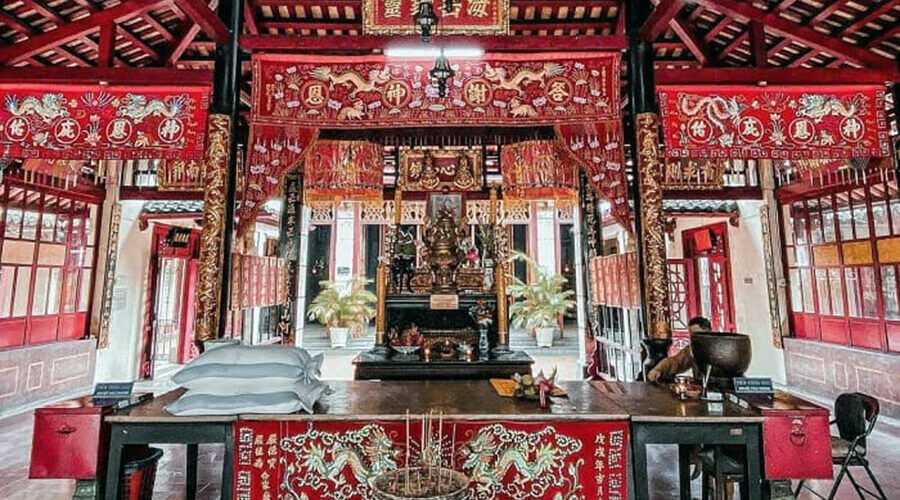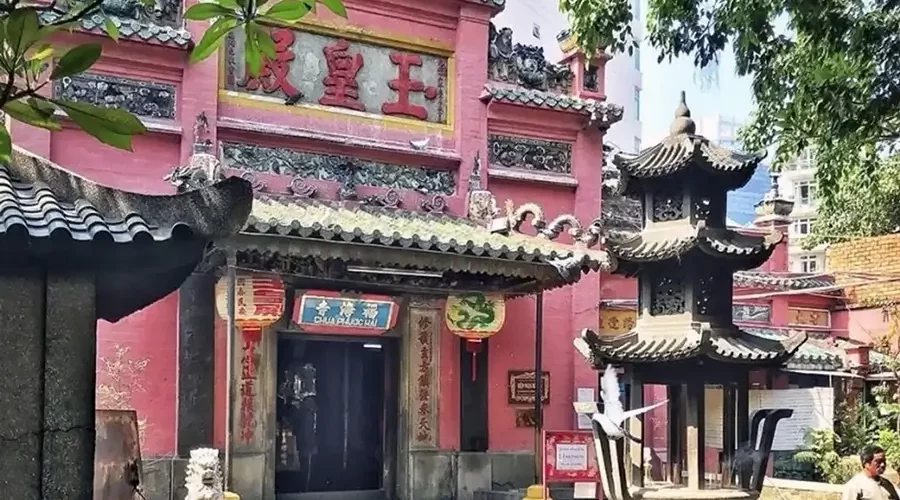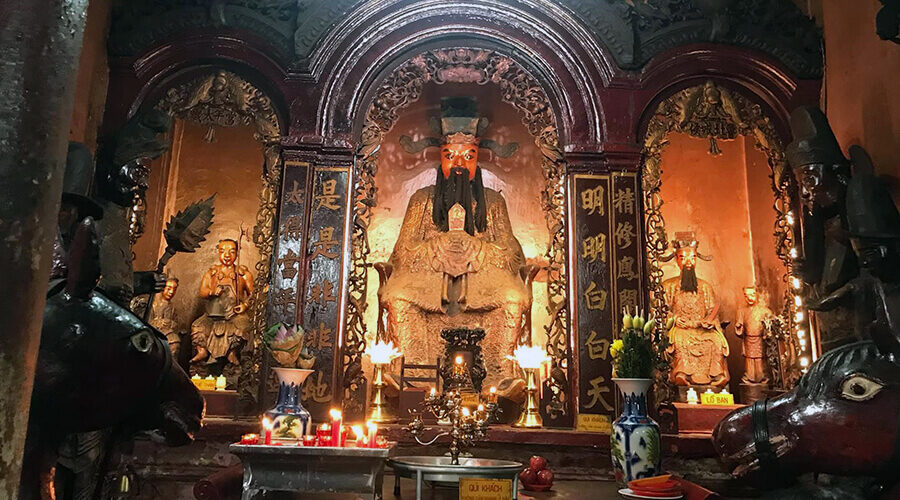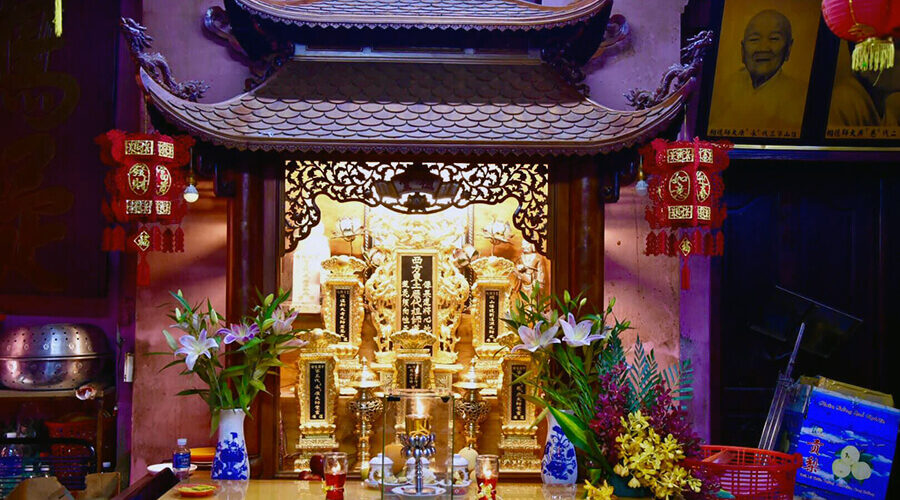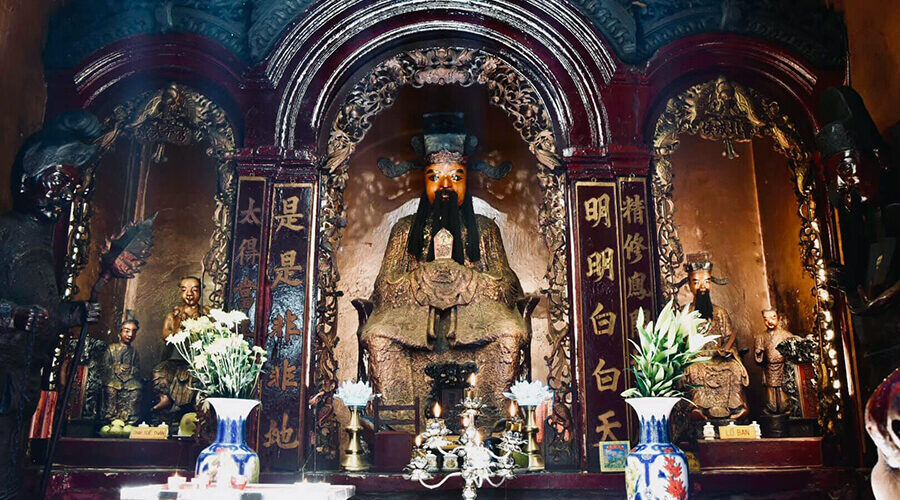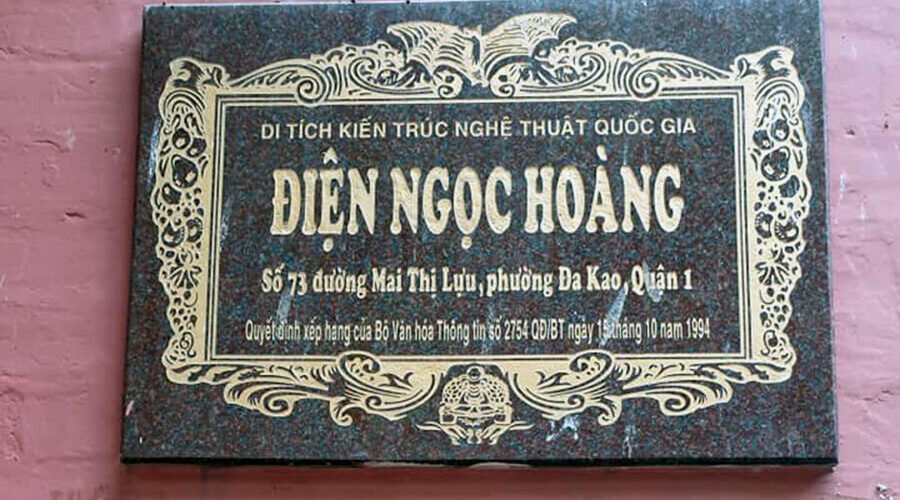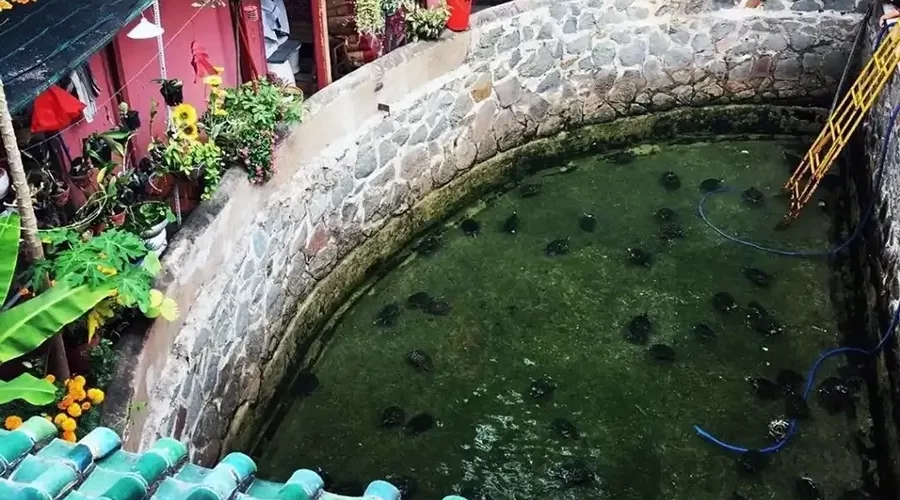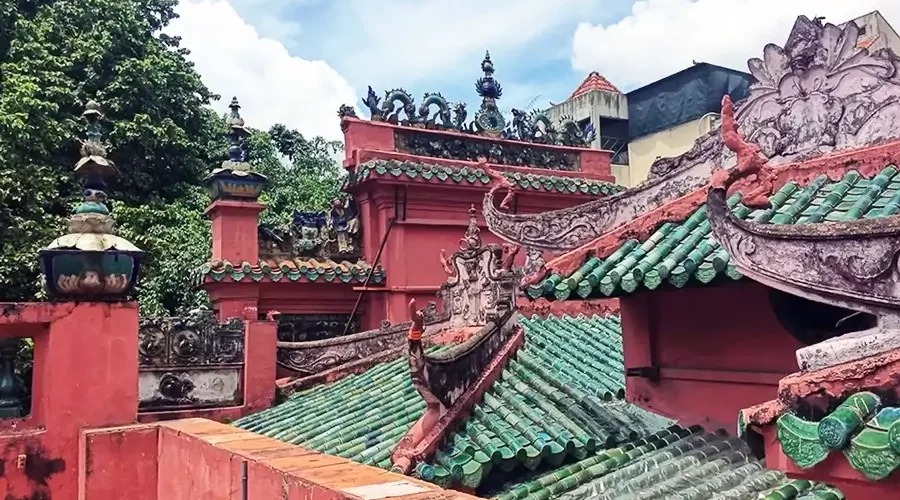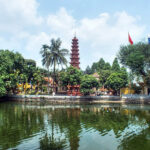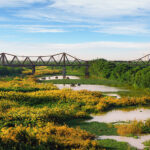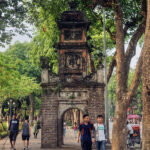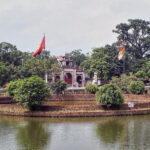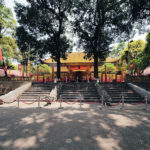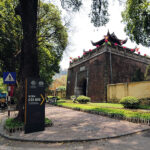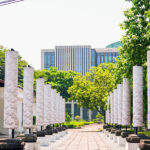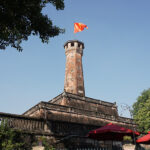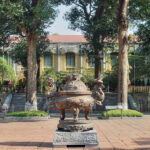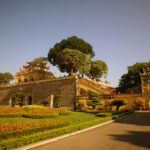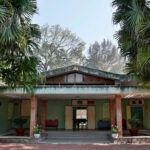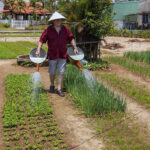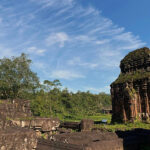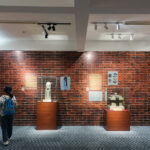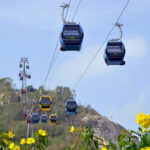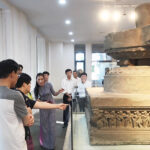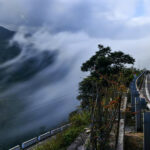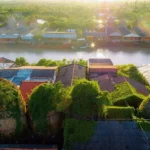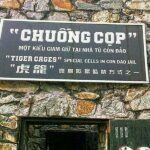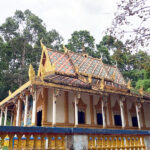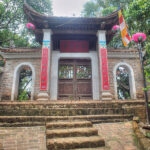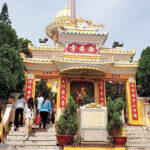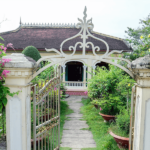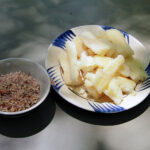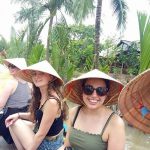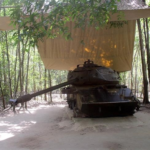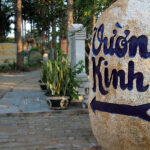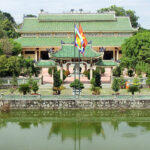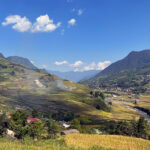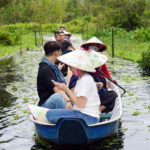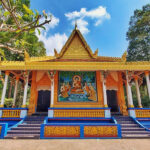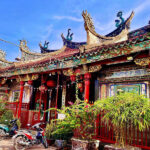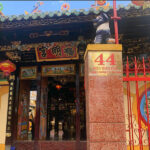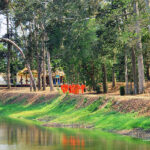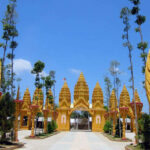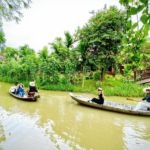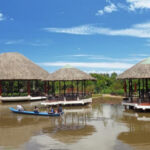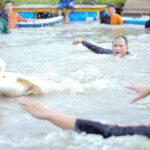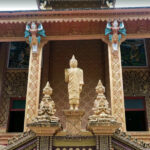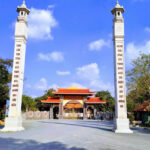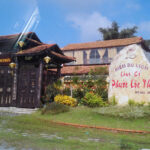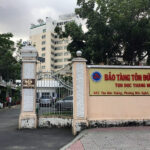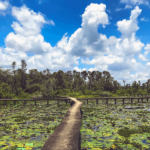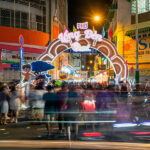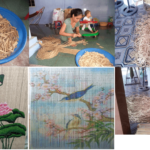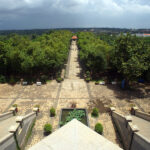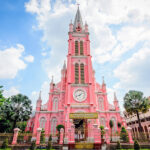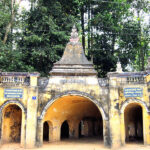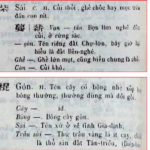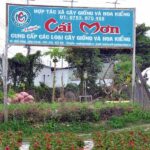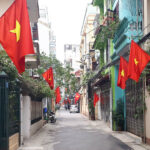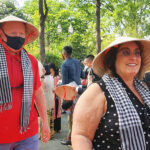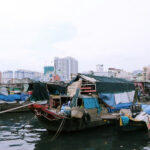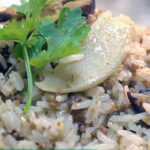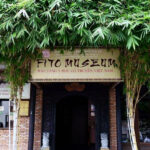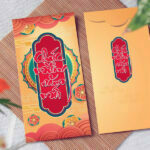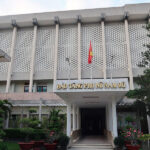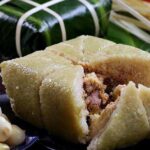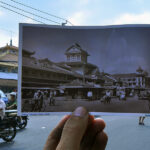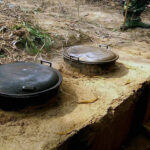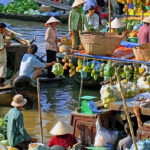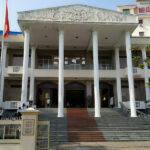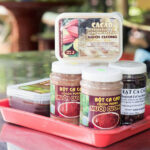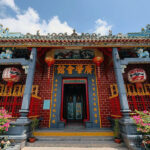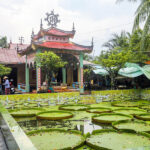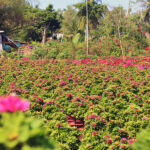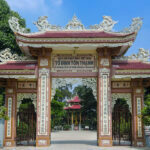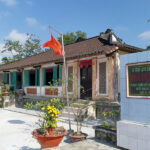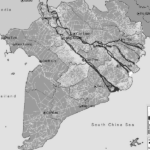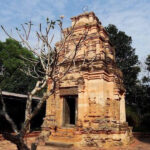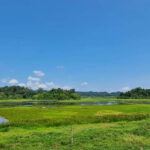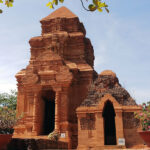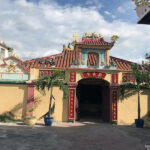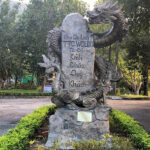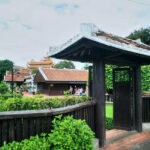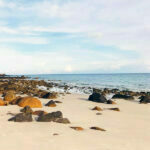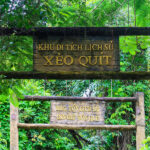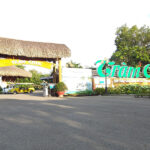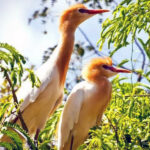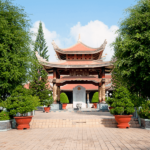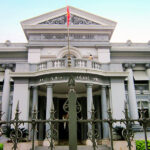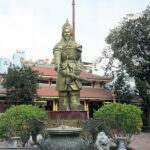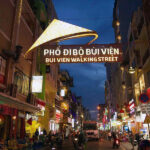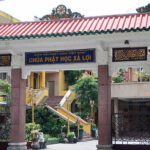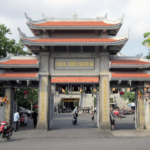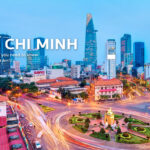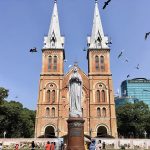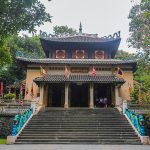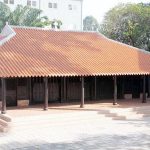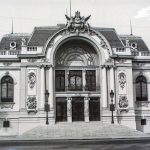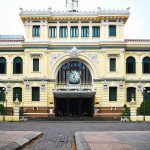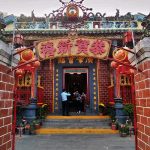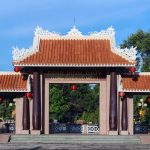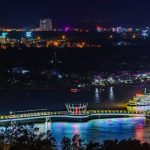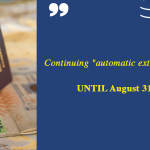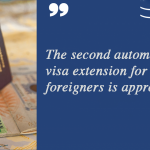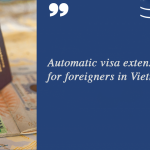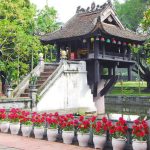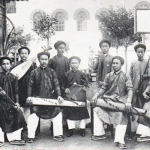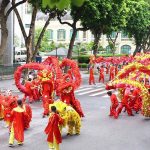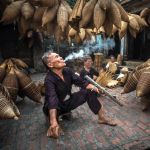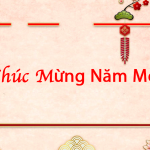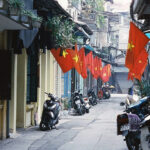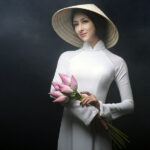Jade Emperor Pagoda (Vietnamese: chùa Ngọc Hoàng; chùa means pagoda), is one of the most spectacularly atmospheric pagoda in Ho Chi Minh City. When traveling to Saigon, Jade Emperor Pagoda will be a peaceful spiritual place but will still leave you with unforgettable impressions.
General information about Jade Emperor Pagoda
The pagoda was build at the beginning of the 20th century by Lưu Minh, a Chinese man who migrated from Guangzhou province in Southwest China. In 1982, Venerable Thich Vinh Khuong came to take over the shrine. Since then this shrine belongs to the Vietnam Buddhist Sangha. In 1984, the Jade Emperor Palace was renamed “Phuoc Hai Tu” (Vietnamese: chùa Phước Hải). However, the locals around here still prefer the name Ngọc Hoàng as it special.
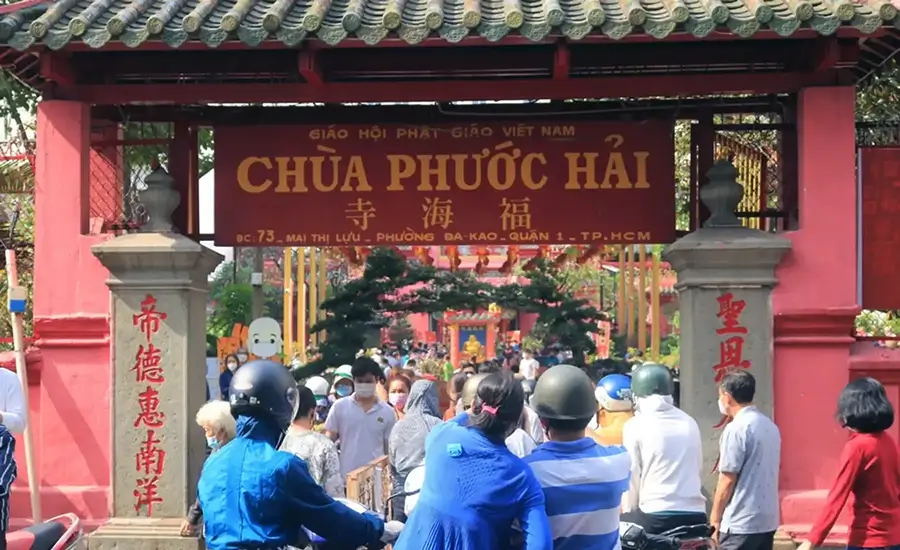
This place attracts many tourists to visit, not only on festivals, but also the first day or the full moon day of every month. The local people tell each other that this pagoda very sacred, so they often come here to pray for luck, peace, love, and have a children. In particular, Jade Emperor pagoda was visited by US President Obama on May 24, 2016, since then its reputation has become more and more known by tourists from all over.
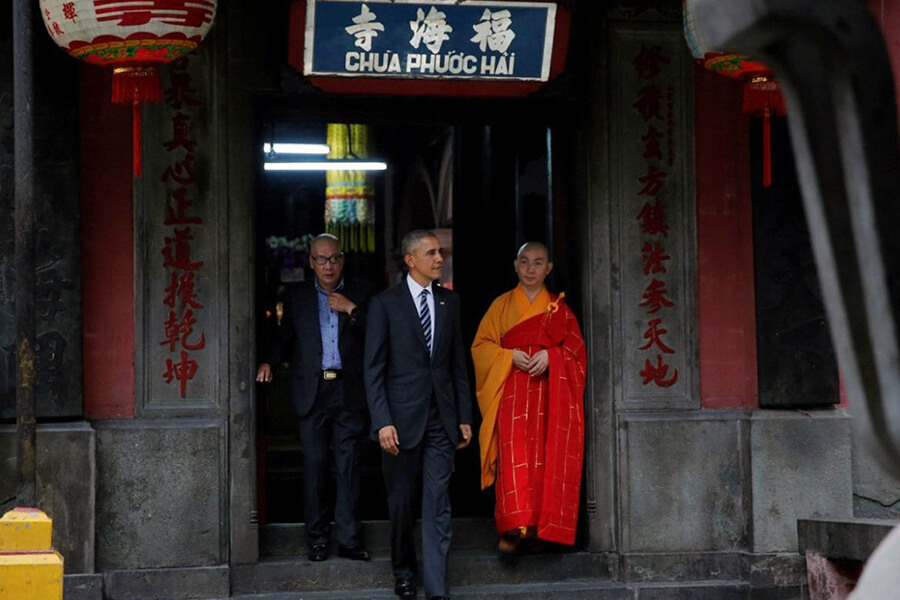
A photo of the President – Barack Obama visited the Jade Emperor Pagoda
The pagoda is free to visit, but a number of donation boxes are dotted around the sight. There is no strict dress code, however, to be respectful, opt for clothing that covers the shoulders and drops below the knee.
Due to a large number of tourists visiting this site daily, you should visit the pagoda early in the morning to enjoy the peaceful and quiet atmosphere here or on January 9 of the lunar calendar – the birth anniversary of the Jade Emperor. On October 15, 1994, the Jade Emperor Pagoda was recognized as a national architectural and artistic relic.
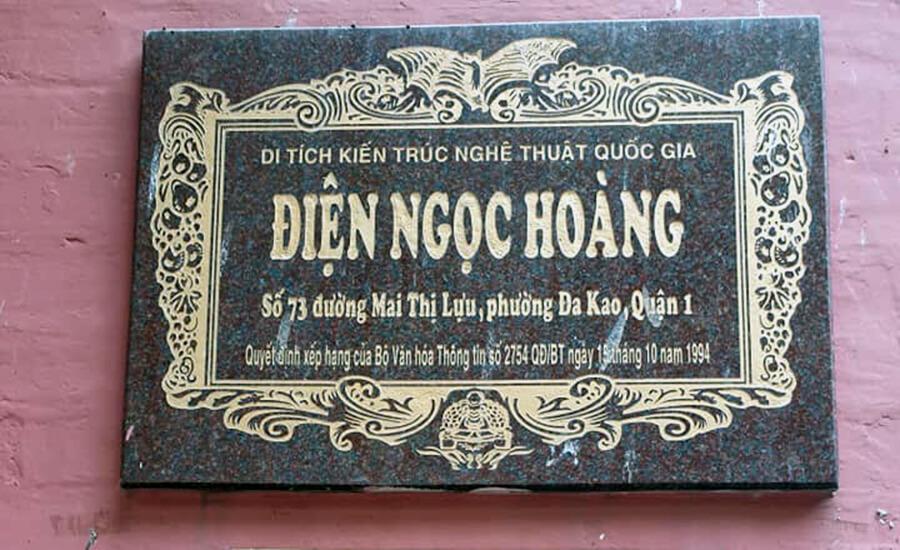
Address: 73 Mai Thị Lựu Street, Đa Kao, District 1, Ho Chi Minh city.
Architecture of the pagoda
The Jade Emperor Pagoda is designed following the style of Chinese architecture with many pictures and walls decorated gorgeously. It was built of baked bricks covered by unique style Yin-Yang of the roofs, decorated with many colored ceramic statues.
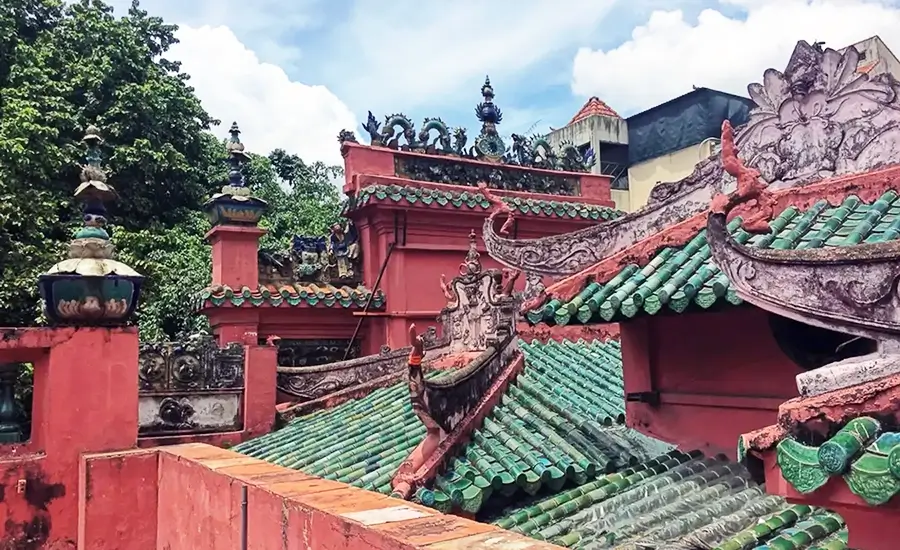
The roof corners are decorated with colorful ceramic statues and elaborately carved mascots. The outside mixes between red bricks and with a bit of ancient colors. After many restorations, the Jade Emperor Pagoda still retains the ancient features and unique design style from the past.
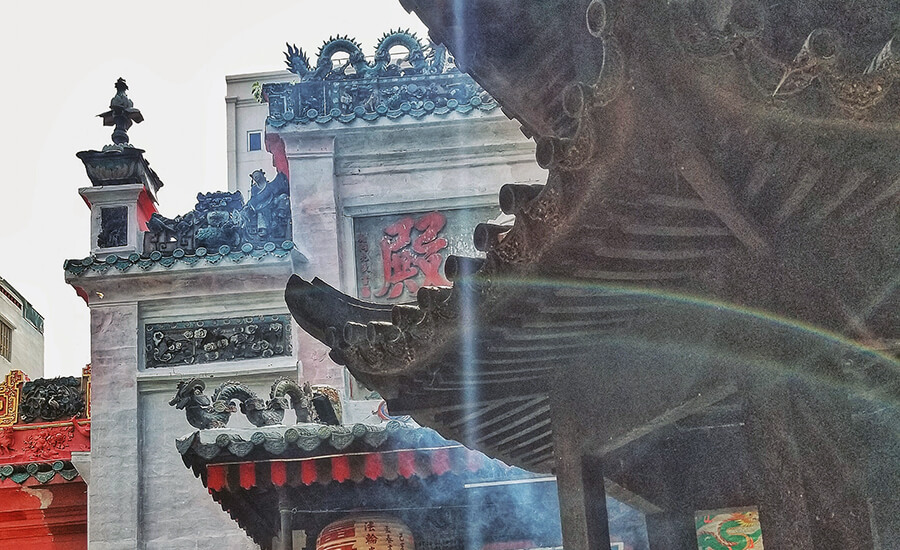
Visitors will have the opportunity to admire valuable works of art, made of ancient materials such as ceramic and wood. In addition, the neatly arranged papier-mâché statues resembling gods gathered to worship the Jade Emperor are also a highlight not to be missed.
From the outside, there is nothing particularly outstanding about the pagoda, but as soon as you enter the gate, you will be surprised by the grandeur inside. First is the three-entrance gate decorated with two dragons fighting over a pearl on the top; two unicorns in the front, and two snails at the corners.
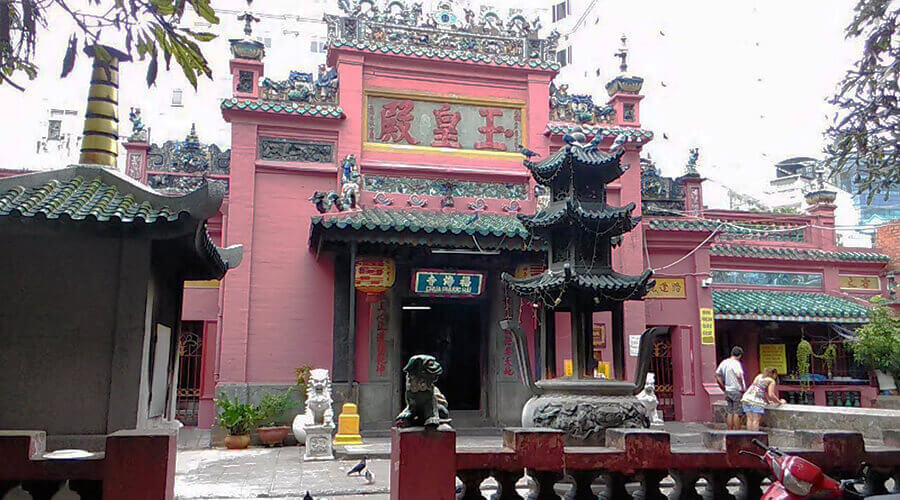
The entrance of Jade Emperor Pagoda
Passing the gate, there is a big yard with the outstanding statue of the protector and a pond where many types of fishes and turtles living.
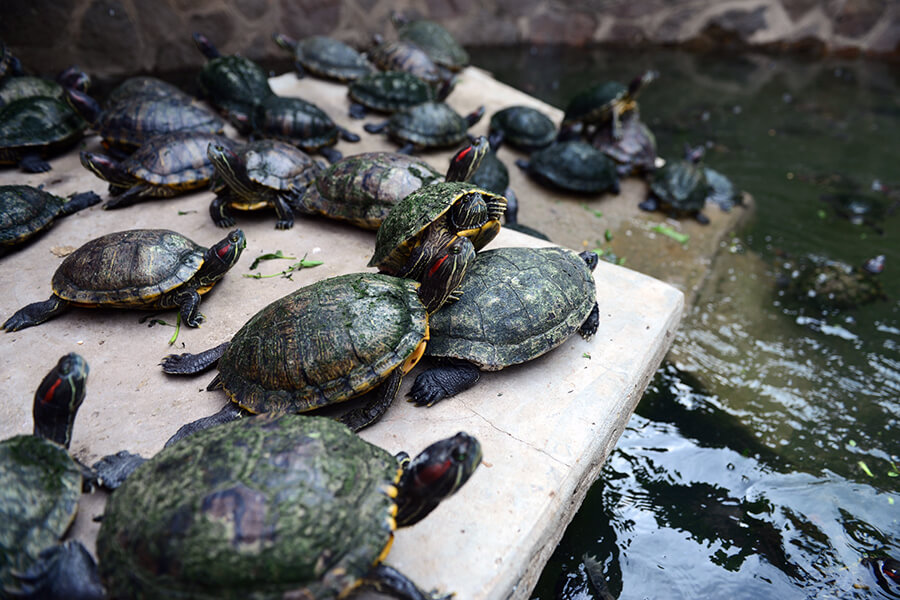
The worshipping area consists of three parts, the main chamber, and two other departments. The Jade Emperor, the Buddha, and other genies are worshiped at the main chamber.
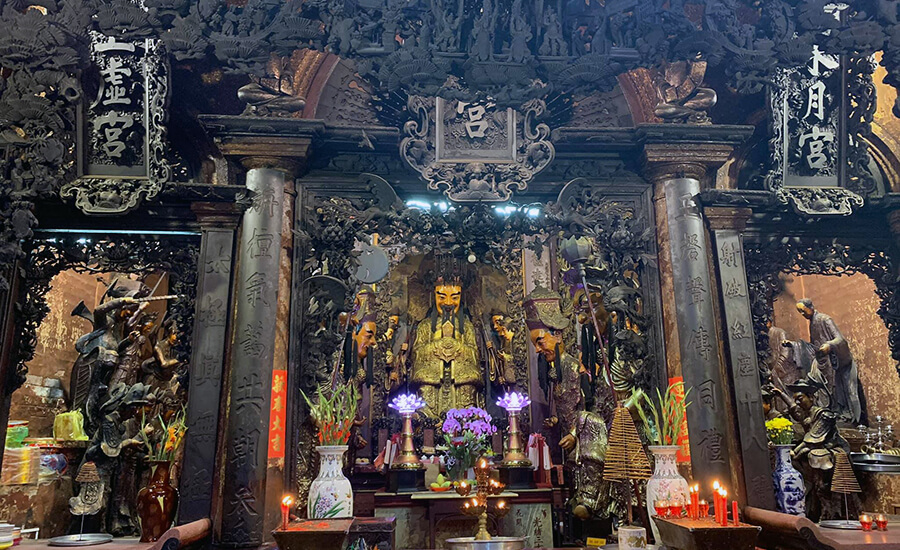
Statue of Jade Emperor and other genies
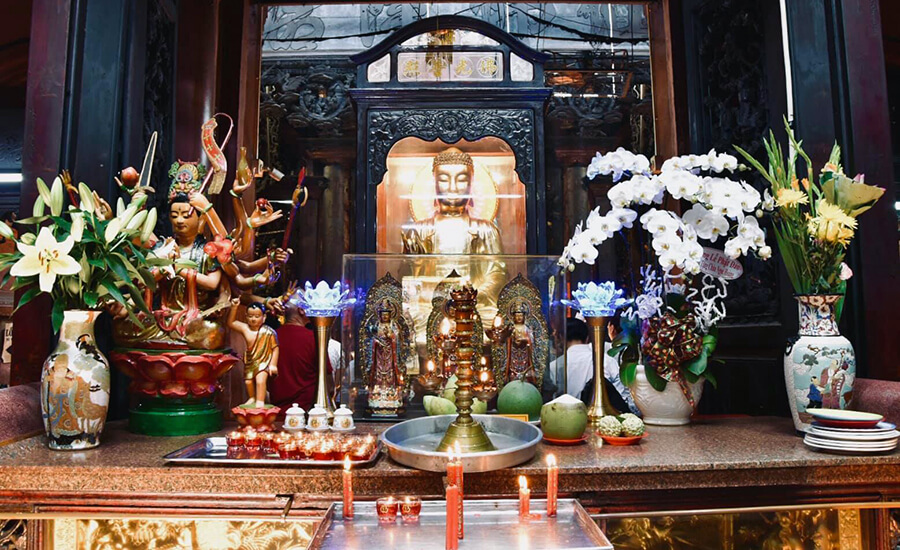
Statues of Buddha
Besides, there is the altar of Nüwa – a mother goddess, culture hero, and Twelve Midwives.
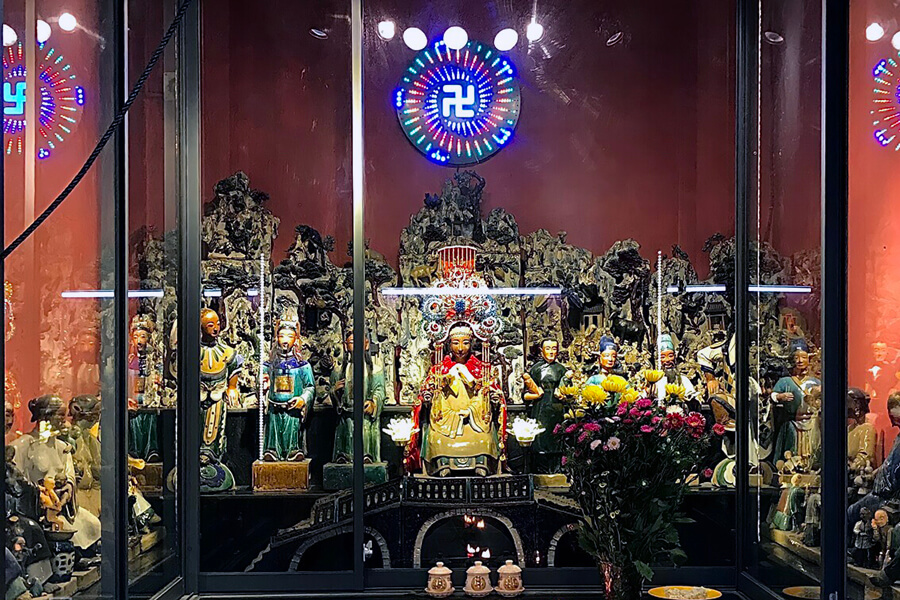
Statue of Nuwa
Legend has it that the Nuwa is the mother in charge of births on earth, while Twelve Midwives and Thirteen masters each take care of one task (shaping hands, feet, etc.) in the creating an image of a child. Therefore, many infertile people often come here to pray for children.
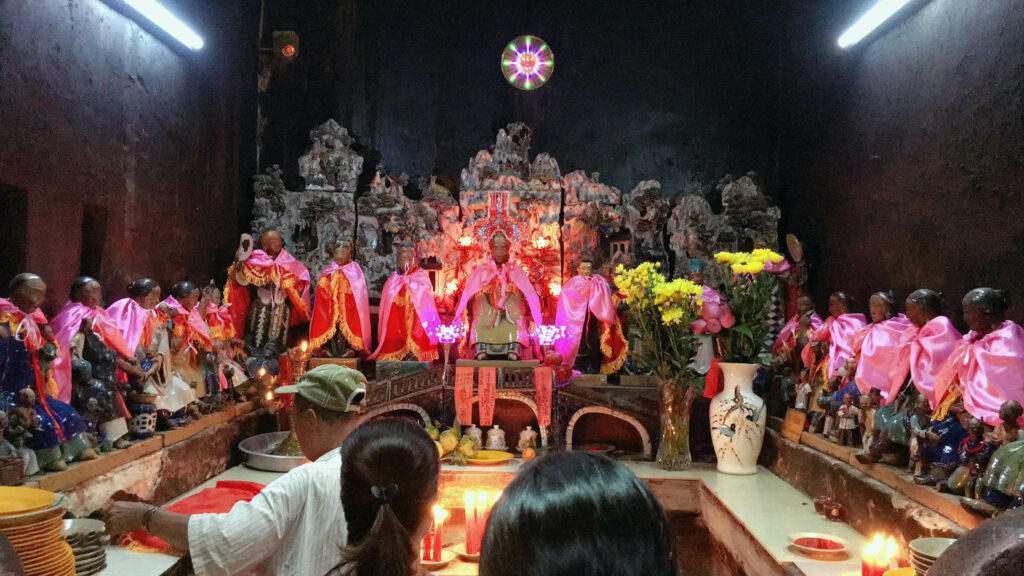
Statues of Twelve Midwives
This is the most crowded area because many people go there to pray for having a baby and luck for pregnant women. On the right of the main hall, a statue of Guanyin is put in a solemn position.
Jade Emperor Pagoda also stores more than 300 ancient statues and other artworks such as worshipping paintings, parallel sentences, altars made from wood, ceramic, and cardboard.
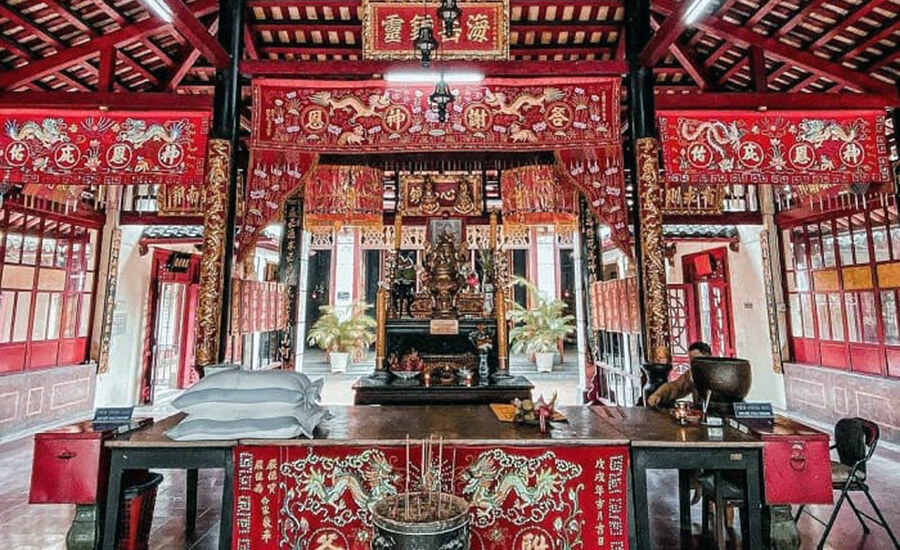
Among them, parallel sentences with the type of Sino-Vietnamese characters heritage that accounts for the largest number in this pagoda. Most of them were delicately carved on precious wood, so they have high artistic value. Through these artifacts, you will understand more about the religious ideology and beliefs which present at Jade Emperor pagoda.
Source: collected by An
Follow us for the best deal with Vietnam package tours and visa services!
